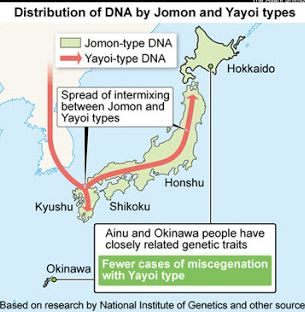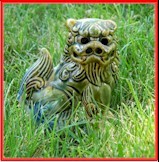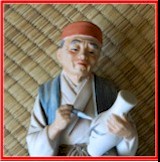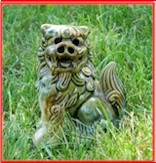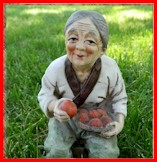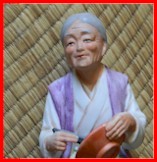(I found this in the January 17, 1998, issue of the Okinawa Times - it may change the historical perspective of Okinawa's early history:)
"Many Korean style tiles were discovered in the Urasoe Yodore, the royal mausoleum in the court of Urasoe Castle. The Urasoe City Education Bureau is now trying to unearth the history of Urasoe Yodore, which was the tomb of the Eiso family which controlled the southern part of Okinawa Island from 1187 to 1392.
"The finding of the Korean tiles shows that there were formal historical relations between ancient Okinawa and Korea in the early stages of the Ryukyu Kingdom. Researchers believe that Korean style kilns and buildings were present at the time. There has not yet been any historical evidence of the existence of
such kilns in other Asian areas.
"King Satto, one of the monarchs of the Eiso family, traded with Ming Dynasty China and contributed to making Ryukyu a rich kingdom. He expanded Urasoe Castle which was initially built by King Eiso in the 13th century.
"The historical discovery of the Korean tiles prove the fact that the Ryukyu Kingdom had experienced exchange with the outside world. The city of Urasoe has plans to construct an international park that will include a Korean Temple with blue Korean style tiles on its roof."
From the Ryukyu Shimpo:
According to a January 11 announcement by the Urasoe Board of Education, a large number of Korai-style tiles have been discovered in Urasoe. Korai was a Korean dynasty from 918 to 1392.
The tiles have turned up at the excavations among the ruins of Urasoe Castle at the Yodore, the mausoleum used by Kings Eiso and Shonei. It is presumed to be the location of a kiln for making this type of tile, and if so, it is a major discovery.
Other artifacts have also been found such as metal gilt ornaments. Furthermore, stone walls and evidence of a smith's furnace from the late 14th-early 15th-century era of King Satto have been unearthed.
It is generally accepted that King Eiso built the Urasoe Yodore in the 13th century, and that Shonei repaired it during the 17th century. However, these finds seem to prove that there was restoration work in King Satto's
reign.
Susumu Asato, head of the Culture Section of Urasoe Board of Education, said, "If this proves to be a Korai tile kiln, it will be the first one to be found anywhere in Asia, including Korea.
"If this kind of tile was used in Okinawa, it will alter our image of the Yodore quite radically. We expect more to emerge from our continuing excavations." (Jan 12 am ed)

